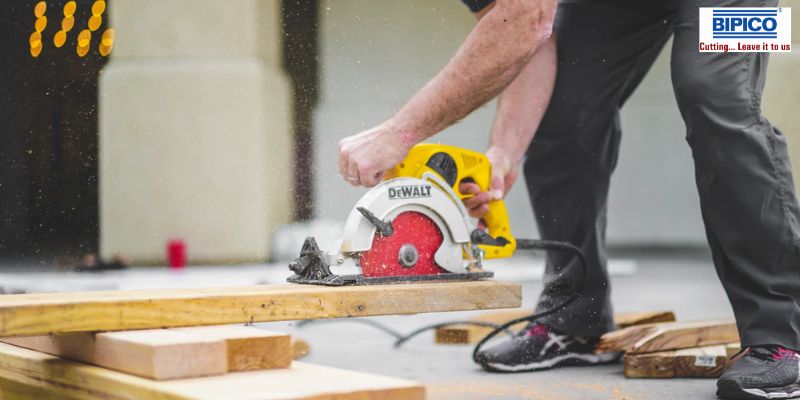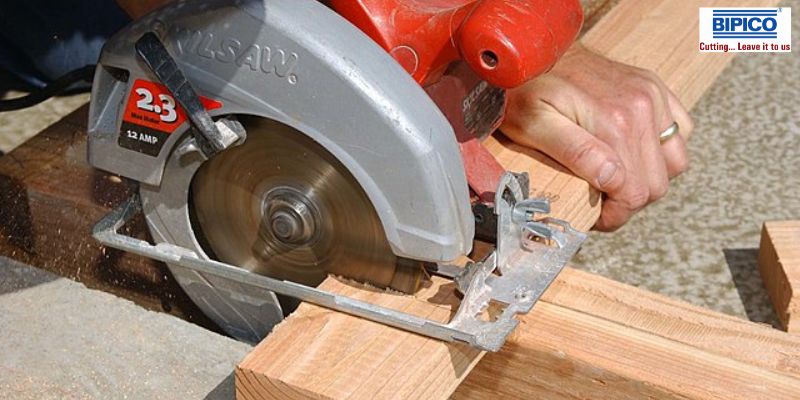How to Make the Best Use of a Circular Saw?
Circular saws are essential for any craftsman or DIY enthusiast's toolbox. They can quickly work tough cuts, like straight cuts, bevels, and even plunge cuts. But to make the best use of a circular saw, it's essential to understand how to use it safely and efficiently. This guide will provide an overview of the types of saws available, the safety considerations to remember when using one, and the steps to get the most out of your saw. We'll also share our top tips on making the most of your saw and getting the best results possible.
A circular saw is a versatile power tool commonly used in the woodworking, construction, and metalworking industries. To make the best use of a circular saw, here are two points in detail:
Proper safety precautions: Circular saws are powerful tools that can cause serious injury if not used properly. Before using a circular saw, wearing appropriate safety gear, such as safety goggles, gloves, and ear protection, is essential. Ensuring the saw is in good working condition, and the blade is installed correctly and tightened is also crucial. Always keep both hands on the handle when using the saw, and never reach over the blade or behind the saw. Additionally, always unplug the saw or remove the battery before changing the blade or making any adjustments.
Proper blade selection: The type of blade you use in your circular saw can significantly impact its performance and the quality of your cuts. It is essential to choose the right blade for the type of material you will be cutting, as well as the thickness and hardness of the material. For example, a blade with more teeth will provide smoother cuts, while a blade with fewer teeth will cut faster but may leave rougher edges. Use a blade with the appropriate diameter for your saw and ensure it is properly installed and tightened. Always refer to the manufacturer's instructions for blade selection and installation.
Proper cutting techniques: To make the most out of your circular saw, it is essential to use proper cutting techniques. Always keep the saw blade in line with the cutting line and use a straight edge or guide to ensure straight and accurate cuts. Adjust the saw's bevel angle and use a protractor or angle guide for angled cuts to ensure precision. Always start the saw before it touches the material and keep a steady and consistent pace throughout the cut. Avoid forcing the saw through the material, which can cause the blade to bind or kick back.
Maintenance and care: Proper maintenance and care can significantly extend the life of your circular saw and ensure optimal performance. Always clean the saw after each use, especially the blade and the air vents, to prevent the buildup of sawdust and debris. Regularly check the blade for any signs of wear or damage, and replace it if necessary. Keep the saw blade sharp to ensure efficient and precise cutting. Additionally, always store the saw in a dry and secure location, and avoid exposing it to extreme temperatures or moisture. Regularly refer to the manufacturer's instructions for specific maintenance and care guidelines.
Proper material support: Proper material support is crucial when using a circular saw. Always ensure that the material being cut is securely clamped or supported to prevent it from moving or vibrating during the cut. This will not only improve the accuracy and quality of the cut but also prevent accidents or injuries. When cutting large or heavy materials, using sawhorses or a workbench to support the material may be helpful.
Please choose the right tool for the job: While circular saws are versatile, they may not be the best choice for every cutting task. For example, a jigsaw or a scroll saw may be more suitable when cutting intricate or curved shapes. Similarly, a specialized saw, such as a reciprocating saw or an angle grinder, may be necessary when cutting metal or masonry. Always choose the right tool for the job and refer to the manufacturer's instructions and safety guidelines before use.
Summary
A circular saw can be an excellent tool for various projects, from home improvement to large-scale carpentry. With the tips and advice discussed in this blog post, you can ensure that you make the best use of a circular saw and get the most out of it. Follow safety guidelines, read the manual, and practice a few cuts before starting any project. With the proper preparation and knowledge, a circular saw can be a powerful and valuable tool.






Comments
Post a Comment